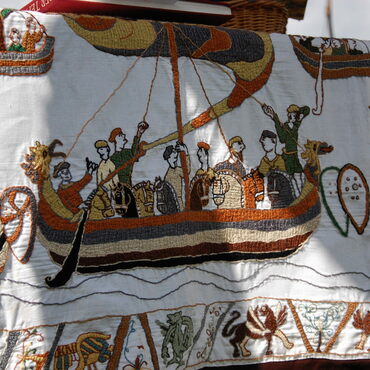Sources
We use different kinds of sources for our background research. Some are of pure academic nature, others derive from the experiences of others or our own wild speculations.
So what does that mean?
Research in academic literature includes the study of archaeological finds, catalogues, digging reports, popular scientific non-fiction literature and research papers. We don't limit ourselves to German or English literature but try, as best we can, to include Scandinavian sources as well (predominantly Swedish). The depth of this purely theoretical research ranges from general texts (books, essays) about the Viking age to the aforementioned finds catalogues and -descriptions as well as scientific research reports. We try to get as much up-to-date information as possible and won't settle for good but old and therefore possibly outdated work, since results from a few decades ago, re-analysed using modern technical and methodical means, may render an obsolete or at least incomplete picture.
By considering our own experiences and those of other re-enactors we may come closer tho the reality of 1100 years ago. If, for example, a certain way of wearing one's knife dangling from ones belt is discussed in literature but turns out to be completely impractical or awkward, we would not incorporate that into our portrayal of Viking life. That is, until new evidence to be considered emerges.
To try and avoid making the same mistakes as others before us, we like to engage in lively and fruitful discussions with other re-enactors. Oftentimes enlightening results or at least some food for thought and new research impulses will follow.
One of the most important aspects of our approach is to not just accept simple, seductive and appealing explanations as long as they seem to stem from thin air. "I once read/heard that..." should at least be countered with a "can you point me somewhere where I can read that for myself?" and "prove to me XYZ did NOT exist a millennium ago!" never is a valid argument, since one cannot prove a negative, especially not a thousand year old one. Most of the time a healthy mix of skepticism, imagination, practicability, curiosity, and trying-out is called for, although each of us prefers his own mix. We certainly no not have a "we just only do it this way"-rule.

